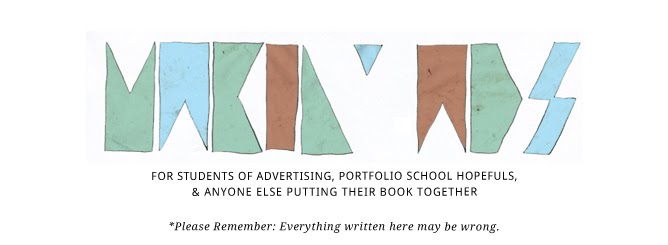I have argued with clients before. I have seen other creatives
argue with the client. I have even seen account people and agency presidents argue
with the client. And here’s what I have learned:
You cannot win an argument with the client.
Why? Because it is the client’s money that’s been spent. It’s the
client’s job and reputation that are being put on the line. So no matter how
idiotic their rationale may seem to you, you can’t really win an argument with
the client.
That doesn’t mean roll over. I’m not saying be the artless
hands of an irrational mind. But don’t argue.
If you argue enough, the client will ask to have someone
else put on the account.
Or you will lose the business entirely.
It’s hard to do great work when you don’t have an account to
do great work for.
If their reasoning really is stupid and you combatively
point out the gaping flaws in their logic, they may yield to you, and you’ll end up getting your way. But
they’ll resent you for it. And it will affect your next project, or whether you
work on the account again.
Communicating takes more effort than arguing. Helping the
client see your point of view takes more effort than trying to put the client
in their place. Understanding the client’s point of view takes more effort than being unyielding on your own.
I’m not saying compromise your creative integrity. Just don’t
think you’re above the client just because you’re an artist.
You have to be 100% willing to yield to the client. That
doesn’t mean yield to them 100% of the time. It means you have to understand
that it’s their money, their decision to work with you, and their campaign. Being
open to compromise doesn’t always mean letting the work become terrible. It can
mean that. But it doesn’t always have to. Occasionally, it can mean making the work even better.
Sometimes you’ll want the client to fire you. That’s okay.
Sometimes you’ll actually fire the client. That’s okay, too.
The goal is to do great work for people you like. And you
can’t do either if you’re arguing.

